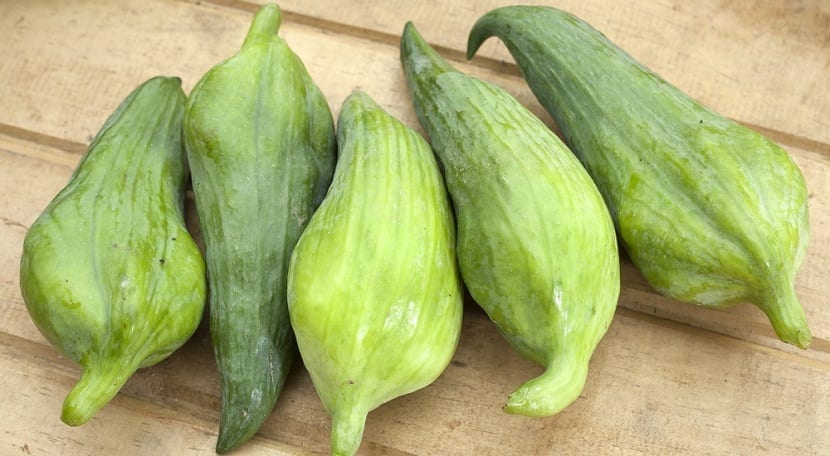
The caigua It is a herbaceous plant that belongs to the Cucurbitaceae family like the pumpkin or the watermelon. Its scientific name is cyclanthera pedata and it is also known by the common name of Achocha and stuffed cucumber. It is a plant with medicinal uses and endless characteristics worth knowing.
In this article you will learn everything about this plant and how to grow it. Want to know more about her? You just have to keep reading.
Key features
This is a monoecious plant, so the same plant can produce both male and female flowers. These flowers have a different ripening process so that they nor self-fertilization occurs.
The flowers have a very delicate yellow color with an intoxicating smell that will leave more than one with a good memory. Its fruit is known to be similar to green chile or to the pepper to fry. It has numerous medicinal functions and other uses for which it is worth cultivating.
The plant has a light green color and its veins are darker, but also green. The meat is white and tender and each fruit consists of 12 seeds. For the consumption of the fruit, the seeds must be removed, as is done with those of the pepper. When the fruit is ripening, it opens to release the seeds it has at a long distance for better spreading.
Benefits and medicinal properties
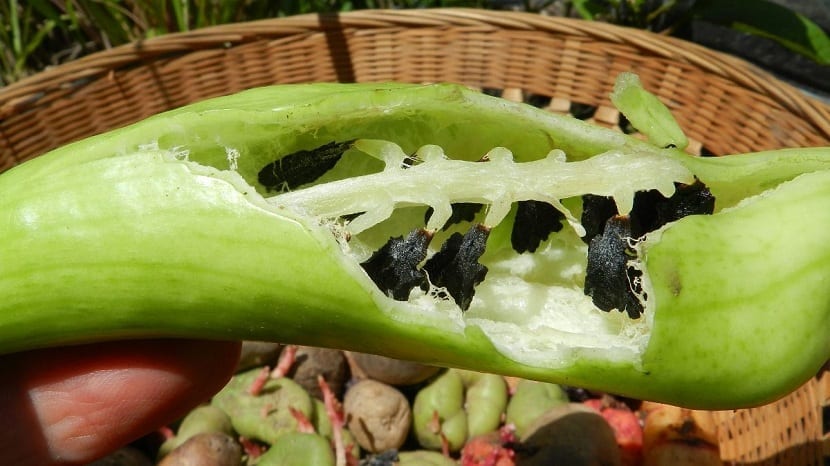
As we have mentioned before, this plant has numerous properties that are worth cultivating. It is very good for fighting excess cholesterol. It is rich in sitosterol-3-beta-D-glycoside. This chemical compound is very similar to cholesterol, so the intestine recognizes it as such and absorbs it instead of cholesterol. In this way we manage to reduce blood cholesterol levels.
The treatment with Caigua is carried out for a duration of three months so that the reduction of cholesterol levels is progressive. Improvements have been noted in many patients demonstrating the quality of its use.
It is also very good for rebalance the level of triglycerides and lipids in general. This action has an important place in those women who suffer from an imbalance consisting of the physiological change that the body experiences when menopause occurs.
Origin and uses

Originally this plant It is native to the Andean Cordillera, between Peru and Bolivia. The climate in these areas is usually colder and at high altitude, so this plant is used to surviving in more extreme conditions. Thanks to this ability to adapt, it is very easy to plant it in our gardens and orchards.
The areas where the caigua is most cultivated are in Central and South America. In Europe you only see those plantations that are carried out by gardening enthusiasts and those who are passionate about growing. It has a great resistance to parasites and diseases although they have a great longevity.
To cultivate the caigua we only have to look at how a cucumber is planted. One of the ways to cultivate it is to use simple and low pergolas or tripods to be able to invade as much space as possible and take advantage of the land. The pollination of this plant is done through insects that pollinate the female flowers through the nectar of the male ones. The greater the number of pollinating insects, the greater the probability that the fertilization of each of the mature flowers will increase at that time.
There are two options when it comes to harvesting the crop. The first is to choose to choose the fruits when they are green to sell them and be able to consume them. If we do this, we will make the plant continue to produce fruit until colder weather comes with a drop in temperatures. The other option is to let the fruits reach maturity and open to spread their seeds relatively far. This will increase the caigua population in the growing area.
Parts that are used from the caigua
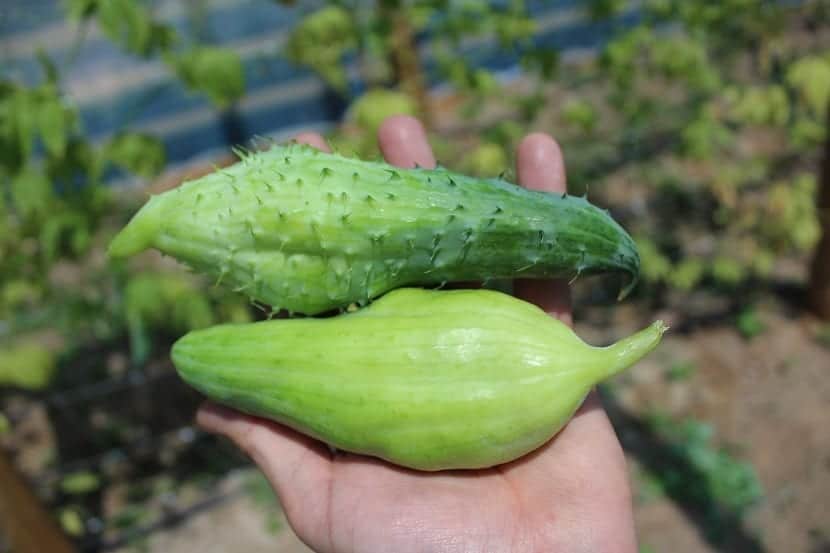
As the seeds have a fairly successful germination it is possible to think about increasing or maintaining the current harvest well. Ideally if your harvest is in good condition is that the fruits do not reach maturity and collect them when they are green. Once collected, they are left to dry in a warm environment and stored.
The most used parts of the caigua are the fruits, since they also act as medicines. It is not collected in any special way or follows any type of technique, but they are harvested one by one. To do this, farmers use scissors or a fairly sharp sickle.
Caigua cultivation
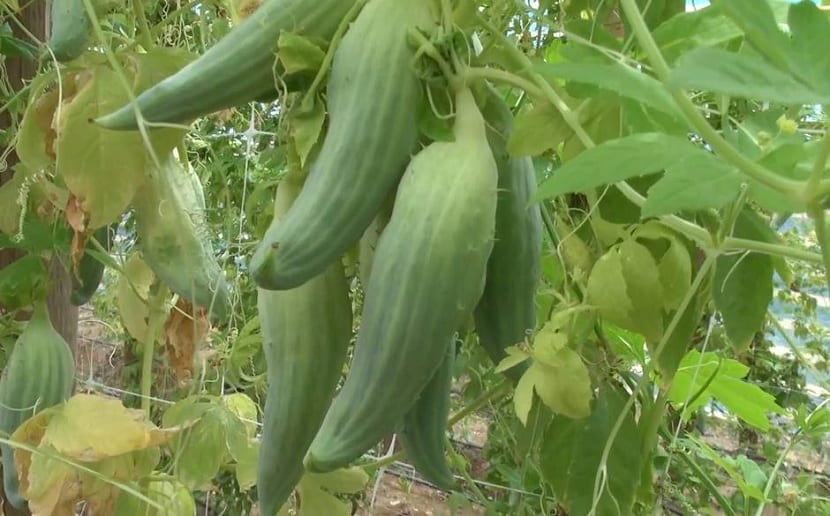
To cultivate the caigua you have to meet some requirements and take into account some aspects. The first thing is that it is a plant that, when growing lying on the ground, is capable of adhering to trees, plants or sticks that are in the environment. Therefore, it is necessary to guide their growth so that they do not grow scattered or mix with each other. When they become adults they are capable of measuring up to 3 and 5 meters in height.
The soil must be very loose and previously tilled. The depth at which it is planted should be between 20 and 40 centimeters. The use of compost, worm castings or some other type of compost is recommended for healthier growth. As for the temperature, it is more favored when the climate is colder than warm, according to the mountain origin it has. Thus, Ideally, it should be in a temperature range between 14 and 22 degrees.
It needs a lot of watering during all its growing phases, but without the water coming into contact with the base of the stem. If the plant becomes waterlogged, it is very likely that it will end up rotting. It is best to water when you see that it needs moisture but without getting waterlogged.
I hope these tips help you grow caigua in your garden or home garden.
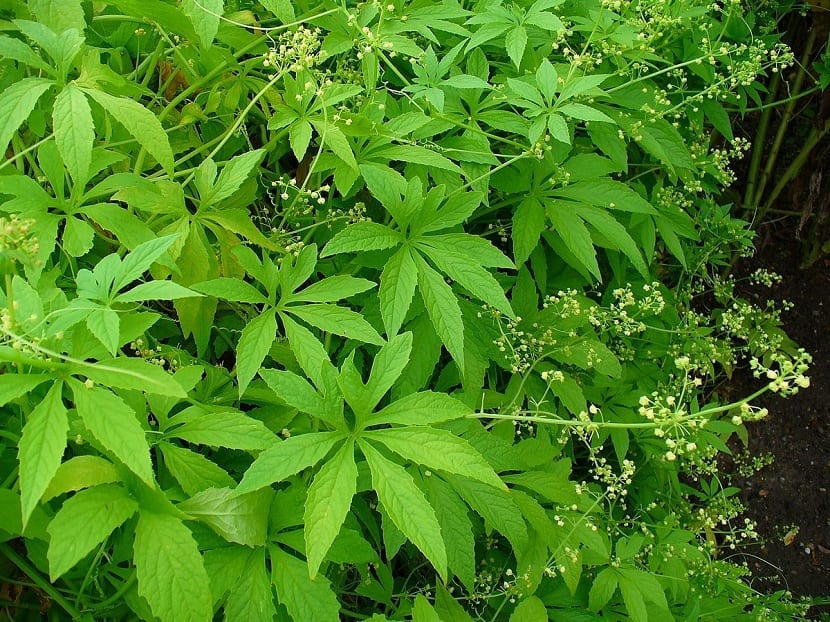
THANK YOU VERY MUCH FOR THIS MAGNIFICENT REPORT ON THIS PLANT, SINCE I CONSUME IT DAILY IN CAPSULES.
We are glad that you have found it interesting, Lucía
Hello, how are you? If you can help because my 10 plants that were very beautiful green with tremendous leaves and well guided everywhere did not flower and wait and wait and the leaves began to turn yellow and there I decided to tear them off. The stem did not rot, I do not know the xq. My aunt who lives about 200 meters from my Ksa had a plant and a month before mine got like this, hers already got like this. Mine had for 5 months
Hi Janeth.
It may be that the land was not suitable, or that they watered too much.
There are plants that, for example, cannot live in limestone soils, since in them the lack of iron causes the yellowing of the leaves.
Regards!
The information is very good, I always wanted to have a caigua plant, now I have it, I would like to see the Peruvian loche, more precisely from the north. Thanks-
We are glad that it has been useful to you.
Kind regards from Spain 🙂
I never saw her… I didn't know her and I saw her on a TV show and I was interested. I would love to try it.
Thank you very much for the article,
How long does it take to bear fruit after sowing?
I would like to try to plant it, I live in Québec and the climate here is extreme, that is why I would like to know if starting the planting in a pot indoors and then transplanting it outside can bear fruit over time.
Thank you so much
Hello Jorge.
They take about three to four months to bear fruit.
Regards!
It is incredible that no article about the caigua or achojcha, has a photo of the first germination.
Those of us who want to learn from these articles do not have the opportunity to see a photo of the germination with the first seedling to compare with our germinations !!!!!!!!!!!!!!!
Hi Liliana.
Think that many plants, most of them actually, when they germinate they look very similar. Until the first true leaves come out, it is impossible to identify them if at the time of making the seedbed they did not put, for example, a label with the name.
I live in Toronto, Canada. I tried to grow caigua using Peruvian seeds 3 years ago; They grew a lot for 3 1/2 months, without flowering. Frustration! This summer I tried to grow it again using Colombian seeds that I bought from a farmer in Villa de Leyva. I planted it in May; at the end of August, there are fruits to harvest. Patience. We had the hottest and driest summer this year with temperatures of 30 * celcius many days, but, successful!
I have some questions. Caigua is a perennial plant, right? Do you think I can keep my roots during our cold winter (down to 15 * C below zero)? Or, I can try to keep them inside my house during winter, but it's difficult: the roots are too long, and they will all die the only time I try make. And, if I am successful in keeping the roots during winter, and they continue to grow again in spring, you think I have to wait 4 months for fruits
Hi Steve 🙂
What you have achieved is undoubtedly an achievement, so congratulations. However, you have to know that the plant is annual; that is, after the fruits ripen, they will dry out. But you can save some seeds to sow next spring.
Greetings from Spain!
Hello, I planted my caiguas in a pot, it comes in handy, but some leaves began to darken on the edges, before I had changed the pot and moved it to a larger one and watered it, I am from Mendoza, Argentina, and it is very cold here, it is inside and Although little leaves continue to come out, I don't know if that of the leaves is normal. Thank you!
Hi Myriam.
Do you have it in a pot without holes, or with a saucer underneath? From what you say, it could be that he was drowning.
It is important to have the plants in pots with holes in their base so that the roots are not waterlogged; In addition, if you put a plate under them, you have to empty it after watering, because otherwise it would have been useless to put them in containers with holes in their base.
By the way, it is also important that it is placed away from drafts, whether cold or hot, since these damage the leaves.
A greeting.